As we gear up to travel to very populated places such as Spain, France, and Ireland, we have found ourselves reminiscing about the incredible remote places we’ve been on this planet. We’ve rounded up the places from our travels where we felt completely cut off from civilization allowing us to appreciate the beauty of the earth. These are the most beautiful isolated places on earth.
Table of Contents
Beautiful Remot and Isolated Places
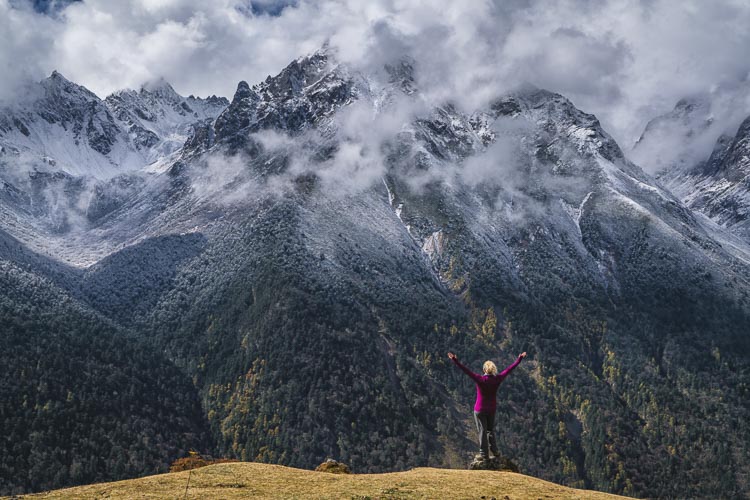
Itelliq, Greenland
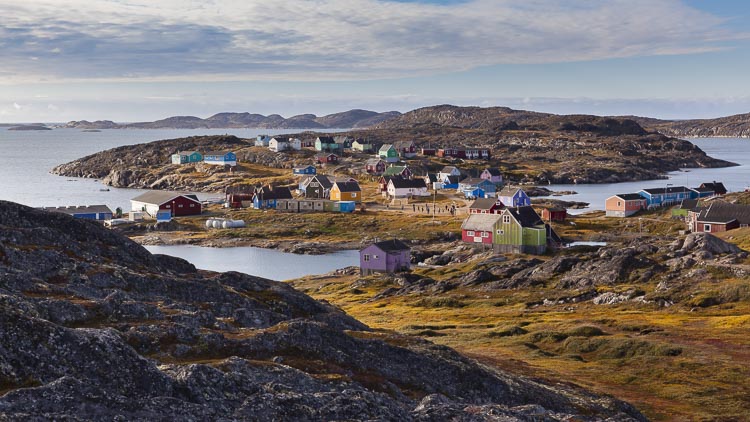
Greenland was one of the most remote country’s we have ever visited. There aren’t any roads connecting cities and villages in Greenland.
To get from one settlement to another you need to fly or take an expedition ship. When we stopped in the picturesque village of Itelliq, it was truly like stepping back in time.
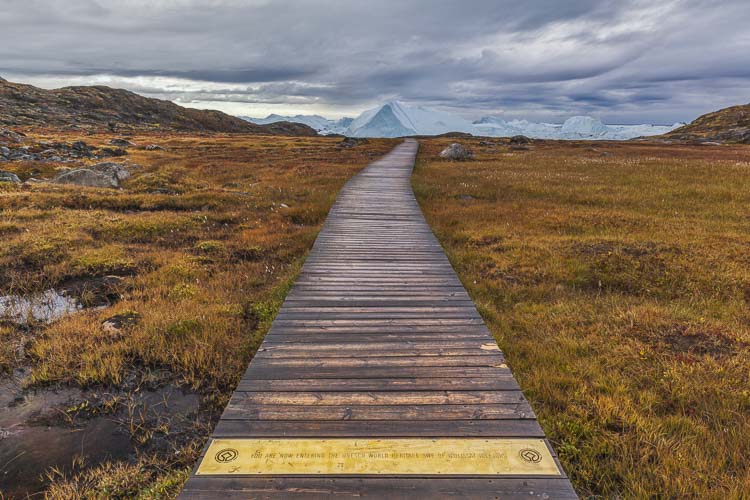
There are more sled dogs in places like Illulisat and Itelliq than people, and communities hunt and fish as they have for centuries.
- Read more about Greenland:
Deception Island – Antarctica
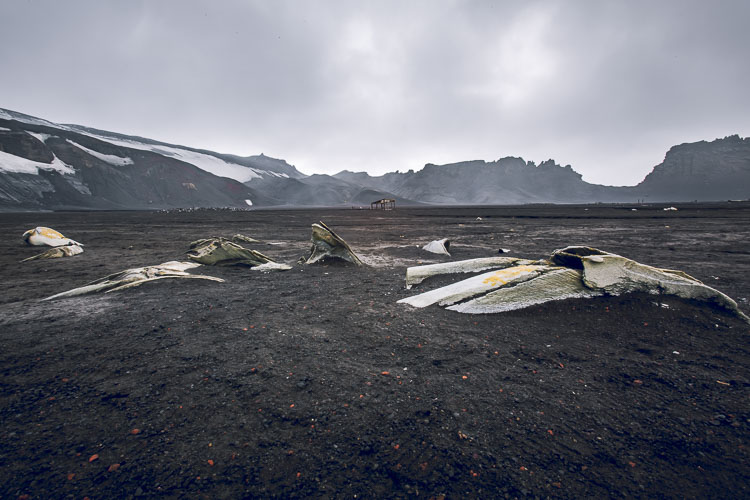
Visiting Antarctica was a dream come true. There are no permanent settlements on Antarctica. The only people that live there are scientists and researchers. Few venture to McMurdo Station in the South Pole, but many are now taking expeditions to Antarctica and one of the most beautiful places in the archipelago is Deception Island. Leaving from Ushuaia in Argentina, this is one of the final frontiers for adventure travelers.
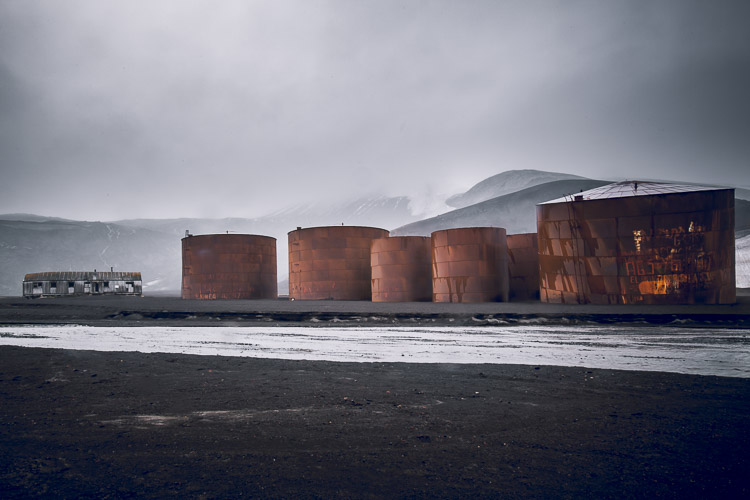
It was while visiting Deception Island that we felt the true isolation of what early explorers must have gone through. This volcanic island was once an old whaling station that had an eeriness and sadness to the land. Whalebones still scattered the beaches from slaughters that happened at the turn of the 20th century when people used whale blubber for oil.
Today, hunting is illegal in Antarctica and the wildlife has thrived. It is a glorious place to visit with millions of penguins scampering on its shores and whales, seals and seabirds stopping by to say hello.
- Read more about Antarctica:
Ivavik National Park – Canada
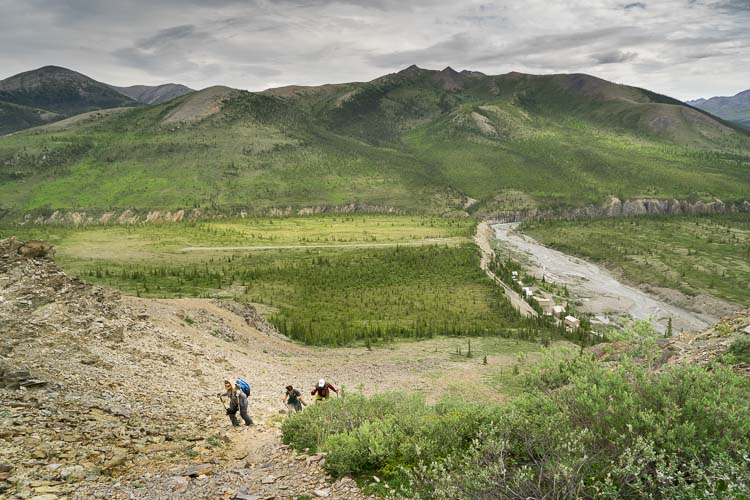
As you scroll through this post you will see that we have included a lot of Canada when rounding up the most isolated places we’ve been on earth.
We truly feel that Canada is the best place to travel off the beaten path. Nothing was more remote than traveling to Ivavik National Park in the Yukon. It took several flights on small twin-engine planes and several days to get there from Ontario.
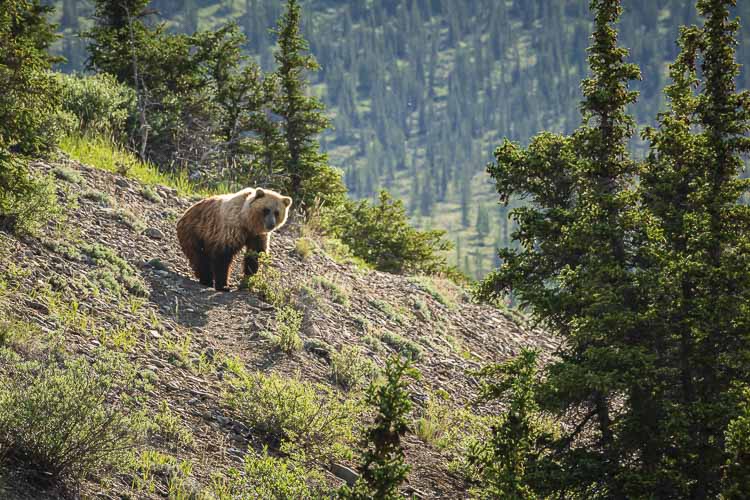
Once we reached our destination, we spent our time in tents surrounded by fencing to protect ourselves from Grizzly bears that roam this territory. We were the ones in cages as bears went about their business outside.
Read more:
- Ivavik National Park – Falling in Love with the Rugged and Remote
- 5 Great Wilderness Tours in Canada
Mongolian Steppe and Gobi Desert
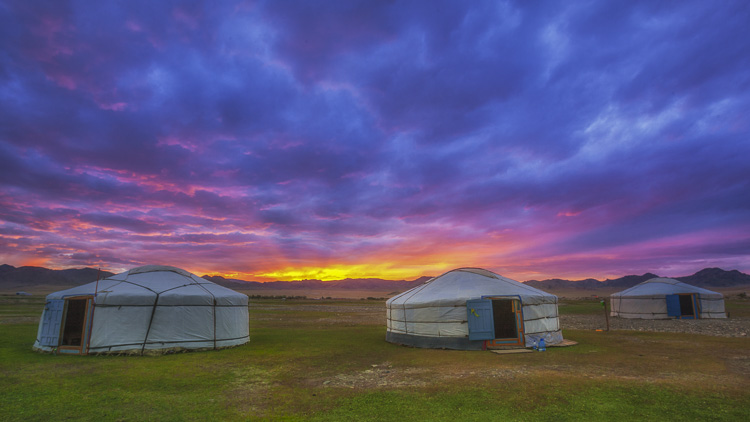
Taking part in the Mongol Rally from England to Mongolia was the adventure of a lifetime. This overland trip took us through 15 countries and two continents.
Places like rural Romania, Moldova and Kazakhstan felt remote, but it wasn’t until we reached Mongolia that we felt truly isolated.
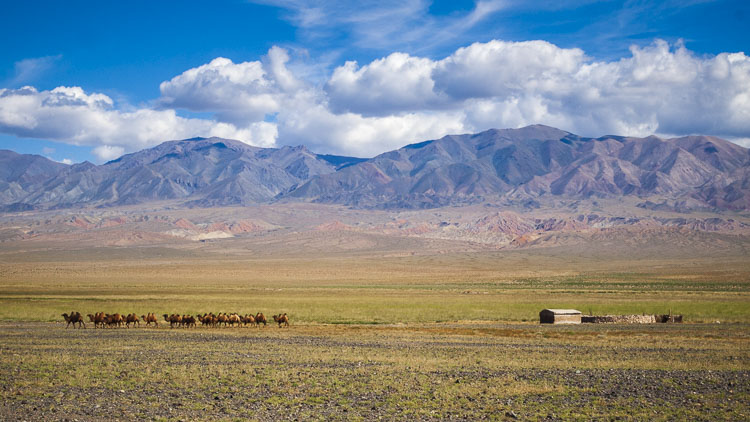
We would choose one of many dirt trails while driving East and hoping for the best as we camped in the middle to the Gobi Desert or the incredible Mongolian Steppe.
The only people we saw were nomads who would visit our camp from the middle of nowhere offering us fermented mares milk and cheese as a welcome gift to their land.
- Read more about Mongolia:
Laya Bhutan
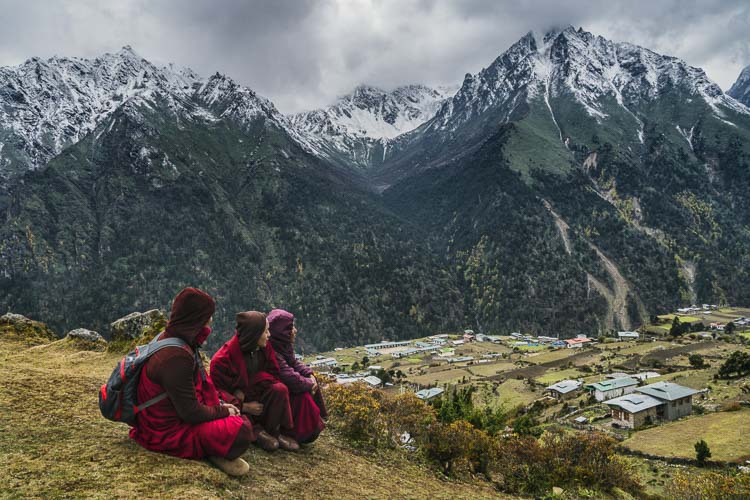
Bhutan is one of the least visited countries in the world thanks to its tourist fee implemented to keep tourism low. Only 250,000 people visit the country each year.
While most people stay to the well-trodden tourist loop, a trek into the Himalayas showcases just how isolated the people of Bhutan Live.
After driving for a day from Thimpu and overnight in Gasa, we were dropped off at the trailhead for a two-day hike to the Himalayan village of Laya.
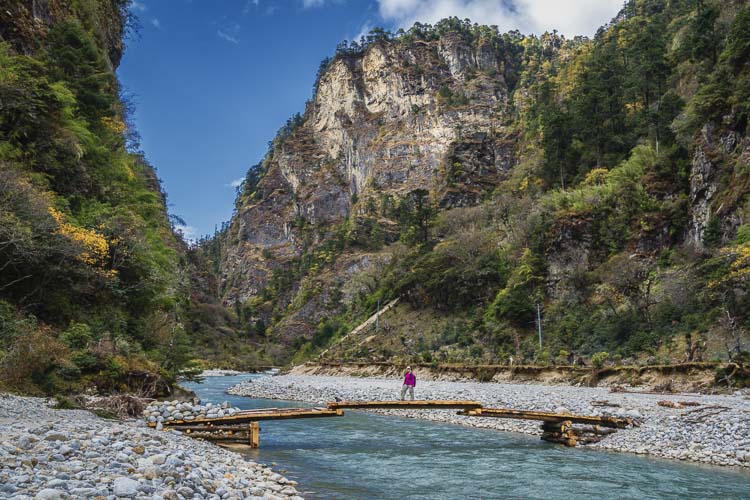
It was here that we experienced one of the most remote settlements in our travels. Located at 3800 meters (12,467 feet), Laya is surrounded by massive Himalayan peaks creating the most beautiful setting for a village that we have ever seen.
- Read More of our time in Bhutan:
Hershel Island – Canada
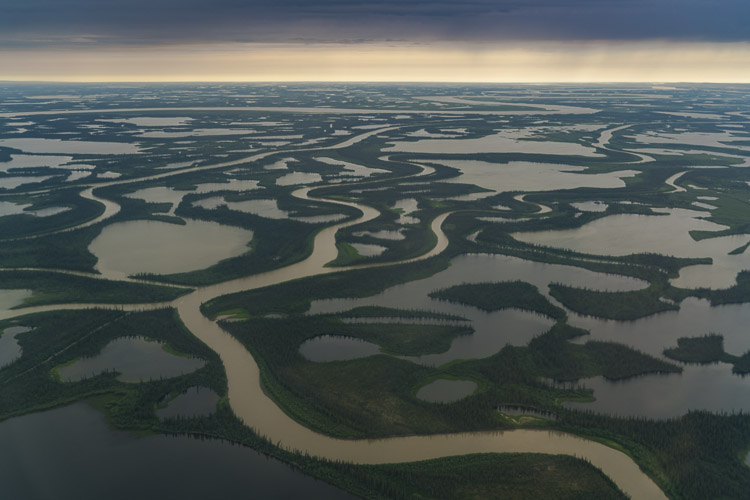
Before visiting Hershel Island off the coast of Northern Canada, I didn’t even know it existed. This island was an old whaling station sitting in the middle of the Beaufort Sea.
At one time, 1500 people lived on the island, but today it is run by Park’s Canada and people can visit to see the museum and relics left from another time.
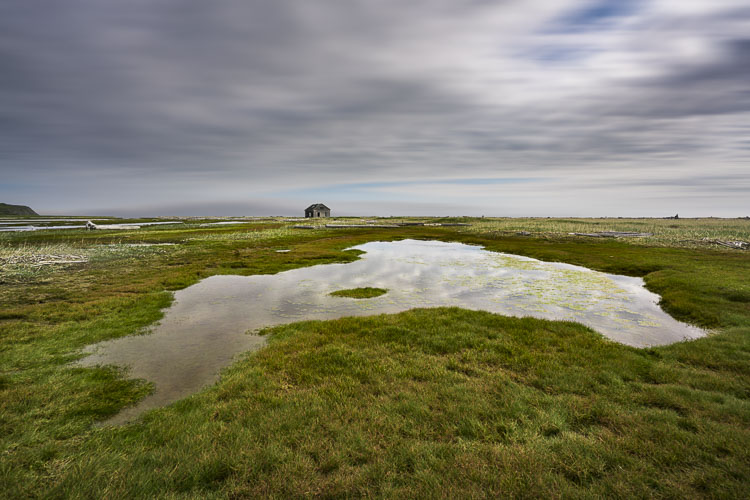
The people who live on the island today seem to thrive in isolation. They still dry salmon and keep an eye out for muskox and bears. Like Deception Island in Antarctica, it is a slice of history reminding us of a different time.
- Read More about Canada:
The Nubian Desert – Sudan
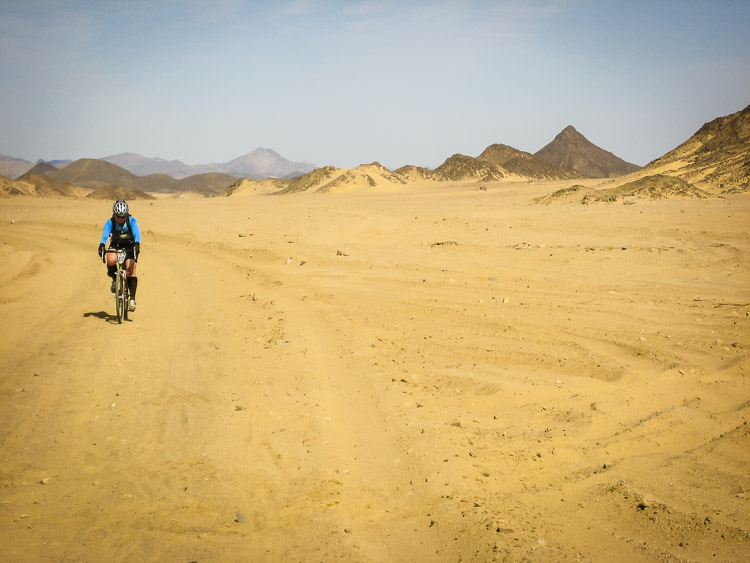
Cycling the continent of Africa offered many isolated opportunities. We cycled through some of the least visited countries on the continent and were well off the tourist path.
But it was in the Nubian desert of Sudan that we felt most alone. Cycling through the deep sand for hours on end, we’d go without seeing a soul.
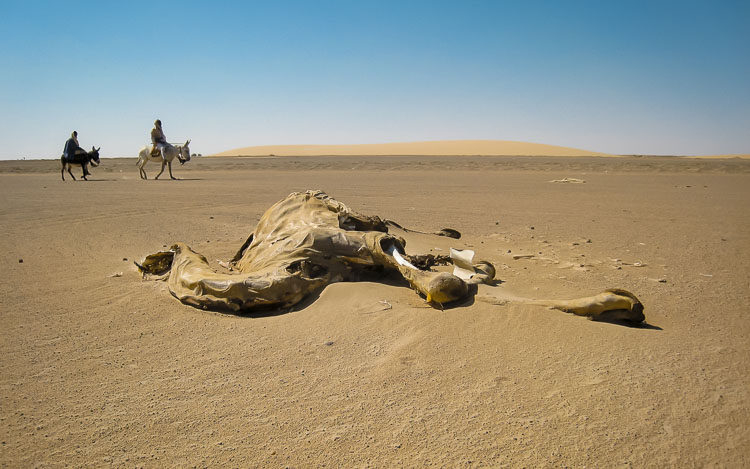
Nomads still herd camel caravans through this desert to market and roads have yet to be built between tiny villages dotting the landscape. How have people survived these harsh conditions for so many centuries?
- Read More from Sudan:
Boz Uchuk Lake Kyrgyzstan
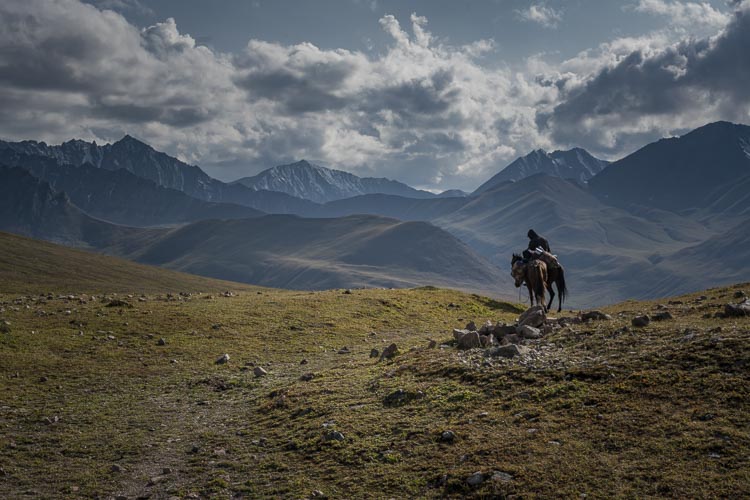
When people ask us where to travel in 2020. (well, people did ask us before the pandemic) we always answered Kyrgyzstan.
This country reminds us of our early days backpacking through South East Asia from 2000 to 20003. The tourism infrastructure is just starting and there are many places that people can travel off the beaten path.
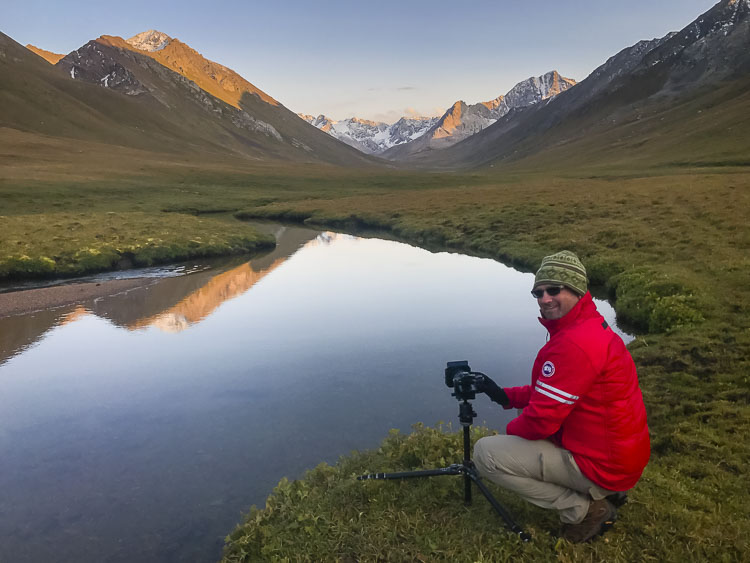
It was during our horse trek to Boz Uchuk Lake in Jyrgalan that we had one of the most isolated treks in all our travels. We didn’t see another trekking party or local for two days of our trek. It was just us, the mountains and herds of wild horses.
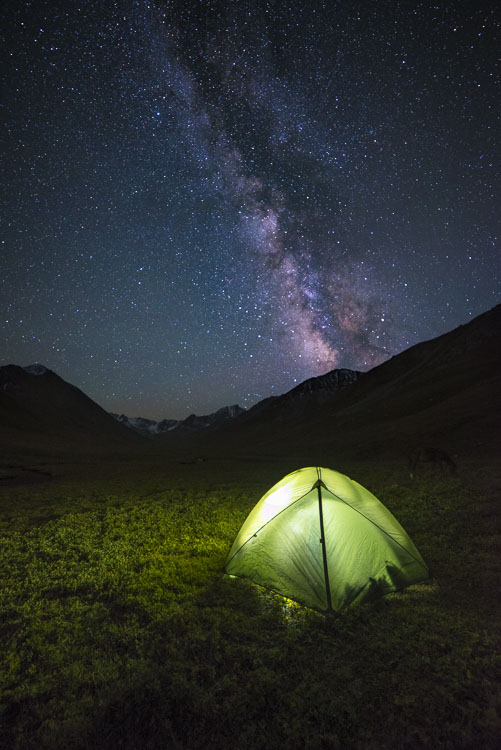
It wasn’t until coming down from the mountains that we crossed paths with nomadic tribes herding cattle from the mountains to the valleys. They smiled as they rode by, barely giving us a second glance.
- Read More on Kyrgyzstan:
Hudson Bay Canada
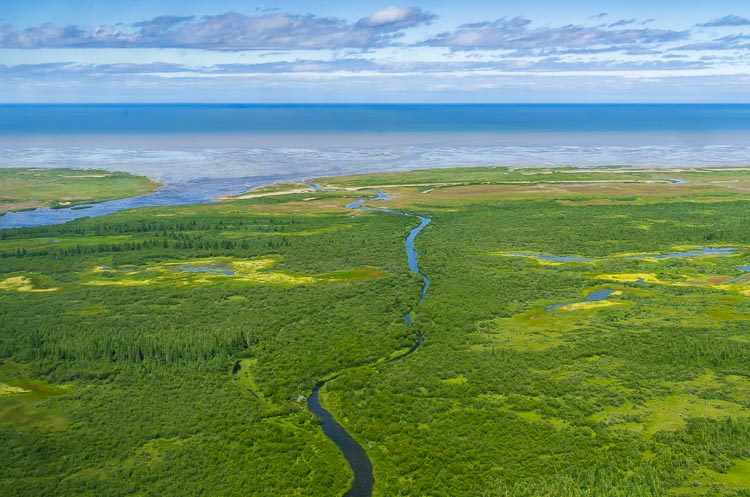
Flying into Nanuk and Seal River Lodges on the Hudson Bay of Canada, truly brought us to the most isolated places in Canada. Churchill Wild owns land in this remote area of Manitoba to bring intrepid travelers face to face with polar bears.
A small plane let us off on a dirt landing airstrip where we hiked to a lodge surrounded by fencing to keep the wildlife out while we were locked in.
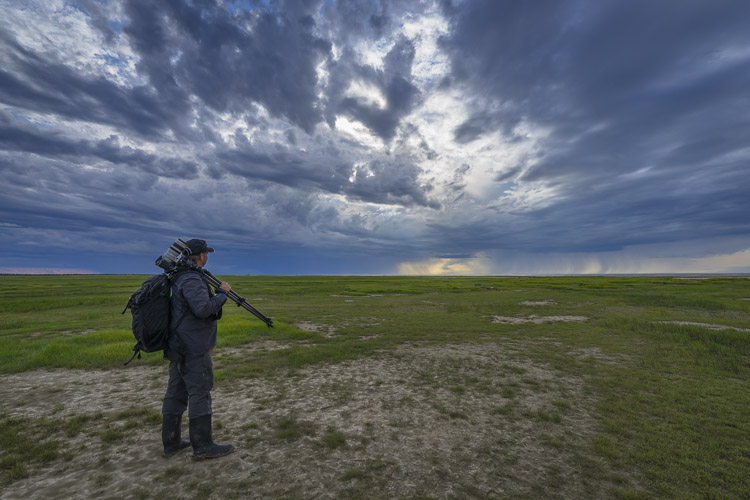
Polar bears are known to walk right up to the fences at Seal River Lodge and while at Nanuk, we had wolves and black bears stop by to take a look.
Jumping on Tundra vehicles, we drove along the Arctic tundra in search of wildlife while being completely cut off from the world.
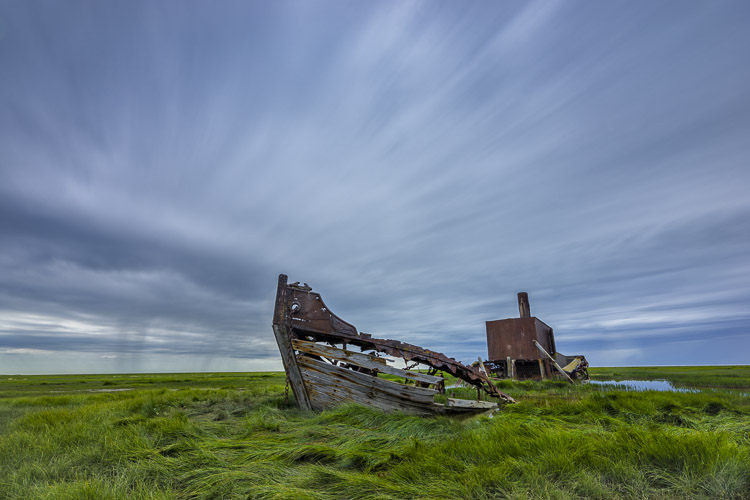
These experiences were the most memorable wildlife viewings of our entire lives.
- Check out More Hudson Bay Adventures:
Embera Tribe – Darien Rainforest
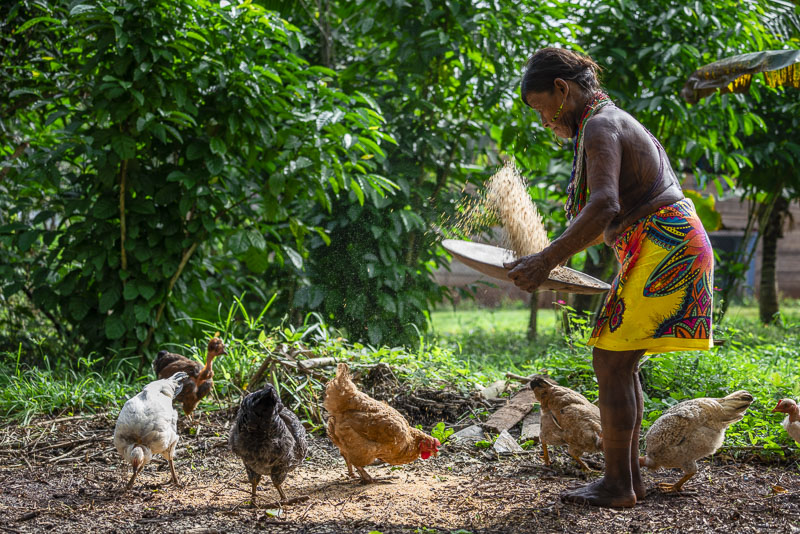
We had heard scary stories of the Darien Gap in the past and while on a small ship expedition from Panama, we were surprised to find out that we were smack dab in the middle of it. Visiting the Embera Tribe was a privilege.
They picked us up in dugout canoes and transported us through a mangrove rainforest to their isolated village in the middle of the jungle.
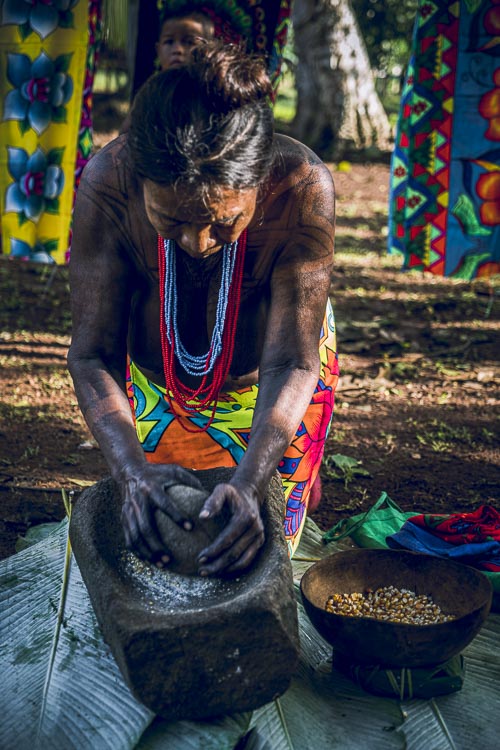
We had a glimpse into life in their traditional village where the outside world has barely touched their daily lives.
Ethiopia
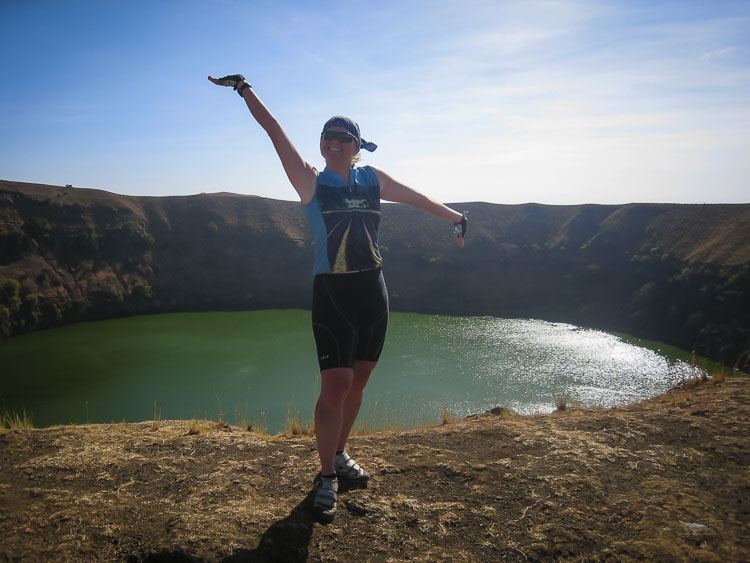
Cycling from Khartoum Sudan, to Adis Ababa, took us through some of the most remote places in Africa.
I’ll never forget crossing through an isolated border where the border guards sat in a shack looking up our names on our visas in a giant old book while we sipped beer sold to us by local children waiting to make a buck as we came out of a “dry country.”
People were fascinated by our cycling shorts and high tech bikes, and children ran alongside asking for bon-bons and birr (Ethiopian money)
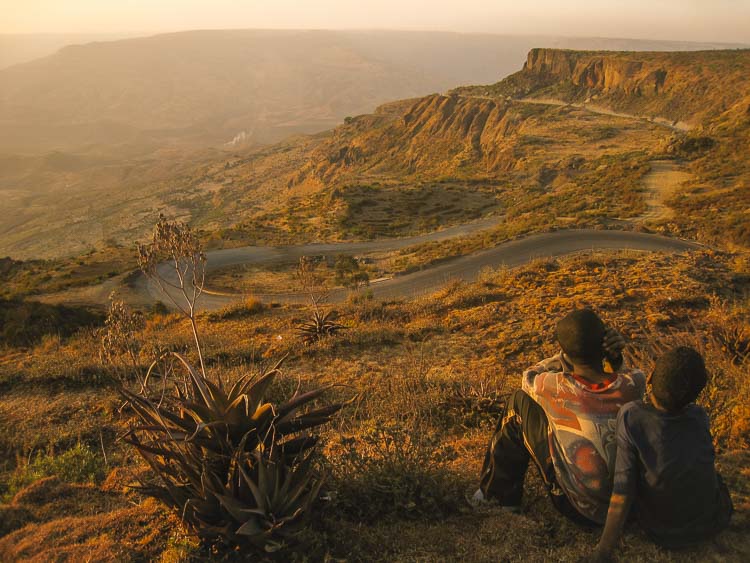
It was climbing to the top of the Blue Nile Gorge, that we’ll never forget. The ride was rigorous and the view was outstanding. And yes, we felt very far away from anywhere.
Siberian Russia
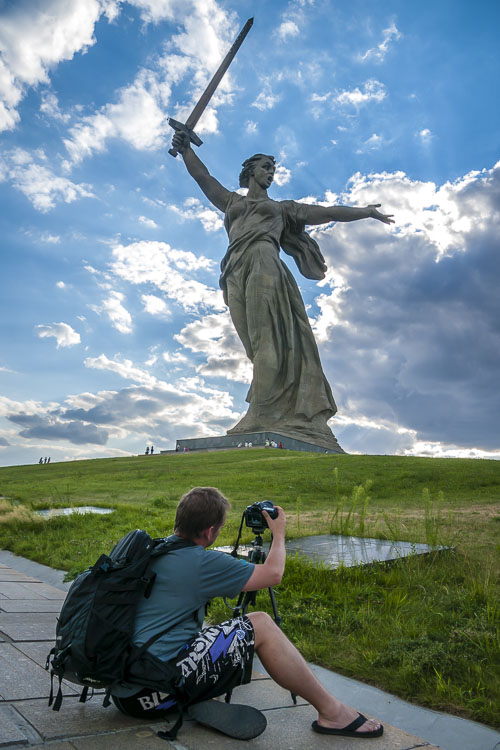
Growing up in the 1980s during the Cold War, we knew a thing or two about Siberia. We knew it was a place that prisoners were sent to and that it was cold, stark and scary.
But while driving through Siberia during the Mongol Rally, it reminded us a lot of Canada – save for a few relics left over from the arms race days.
We camped alone in fields and mingled with locals riding by on sidecar motorcycles giving us cheery wave hello.
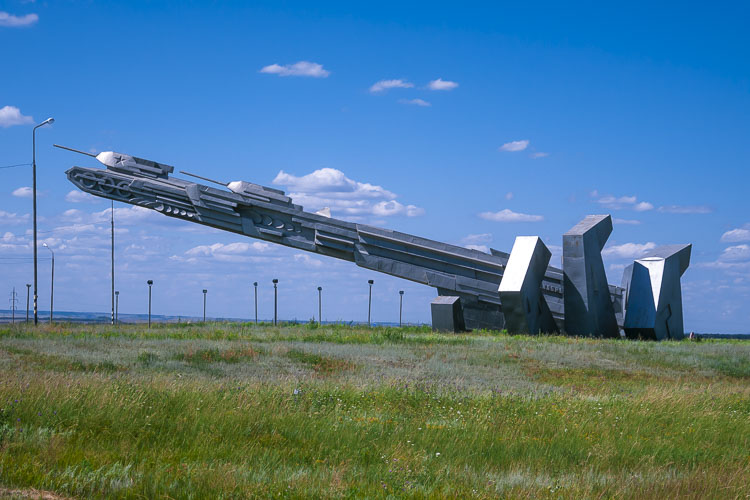
Siberia felt completely foreign and as far away from home as we could get in our little Nissan Almera packed to the brim, but it was an extraordinary experience.
Missianabi Arctic Watershed Trek
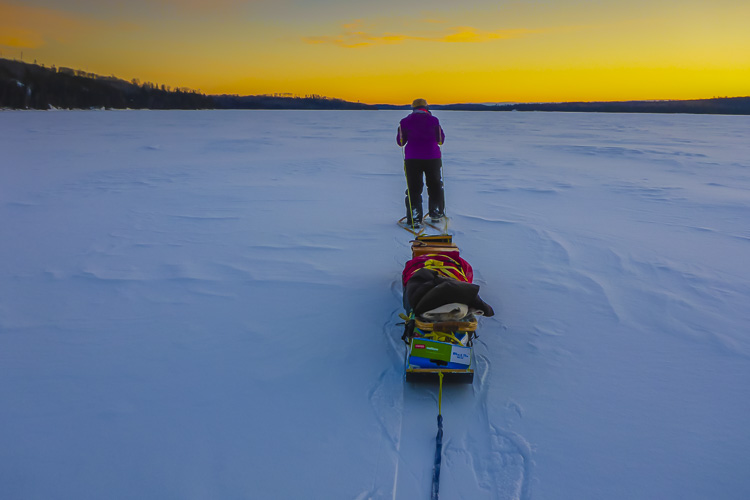
It was the toughest adventure we ever did.
After driving six hours north to Sudbury Ontario and then hopping on a CP rail freighter train another 14 hours North in the dead of winter, we were let off at the headwaters of the Missinaibi River.
For the next 10 days, we trekked over frozen lakes and rivers while pulling sleds loaded with gear. We chipped through meter thick ice, chopped down birch trees for firewood and gathered spruce bows to sleep on at -45.
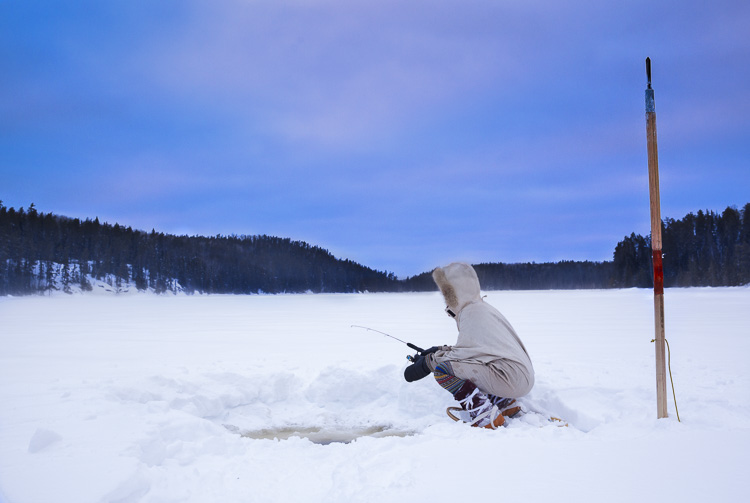
People have asked us how we managed to do this and our reply is
“We had no choice”, the alternative was calling in the army to send a rescue helicopter to pick us up.
- Read More:
Pinnacles of Borneo
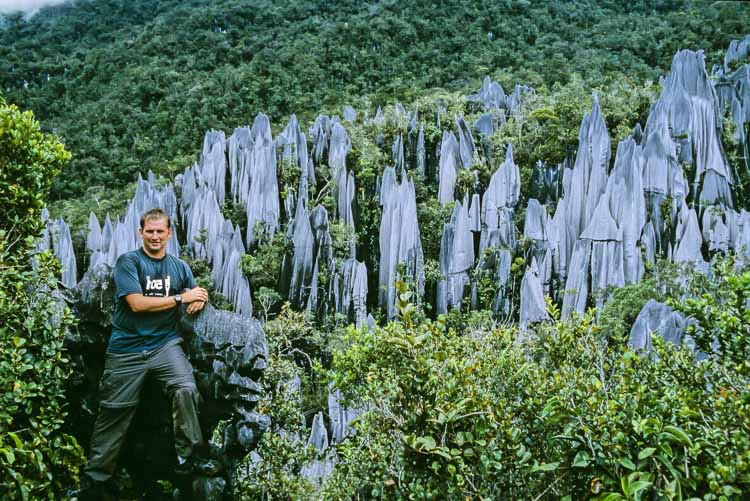
It was 2003 and we followed some fellow backpackers to Malaysian Borneo. We didn’t know the first thing about it, but when we got there, we had the greatest adventure seeing Orangutans in the wild and climbing to the Peak of Mount Kinabalu.
But it was hiking the headhunter’s trail to the Pinnacles of Gunung Mulu National Park that we felt truly isolated.
We hired a boat to take us up river where we were let us at a jungle trail and began a day-long hike to camp 5. After spending the night, we started another harrowing journey up to the pinnacles.
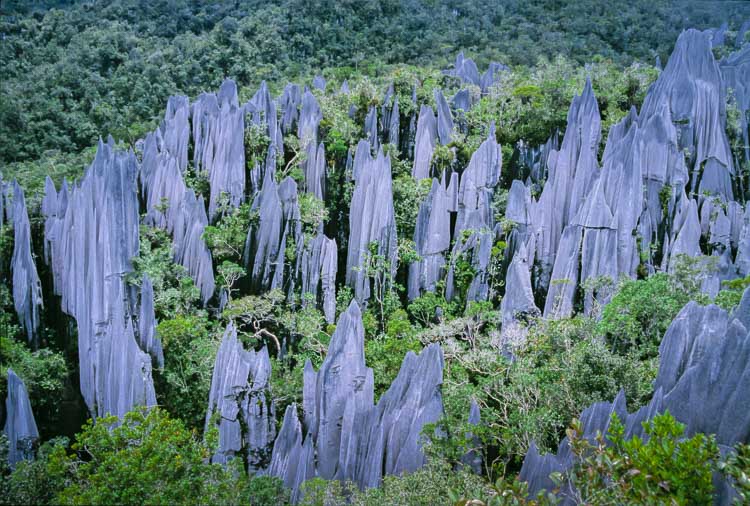
We honestly didn’t know what to expect, but when we got there, it felt as if we were looking down on a giant painting.
It was extraordinary.
Coiba National Park, Panama
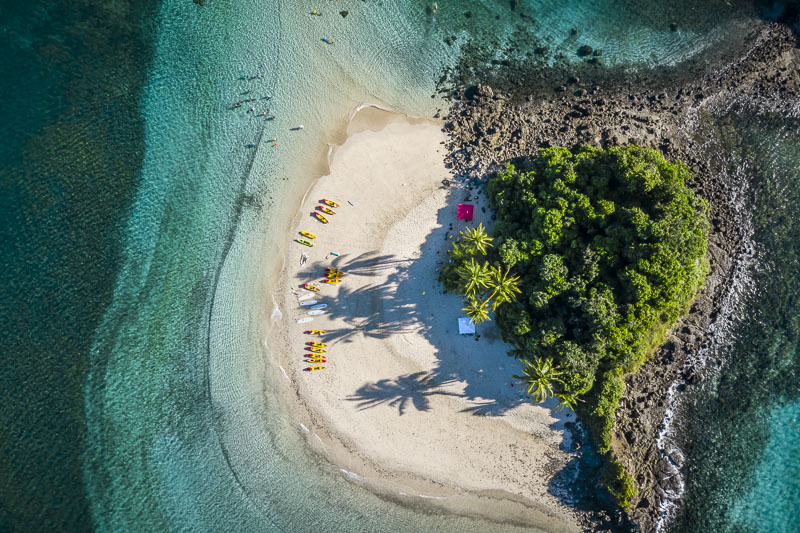
When we pulled up to Granito de Oro in Coiba National Park, it reminded us of Gilligan’s Island. This tiny slice of Paradise sits off the coast of Panama smack dab in the middle of the largest marine reserve in the Eastern Pacific.
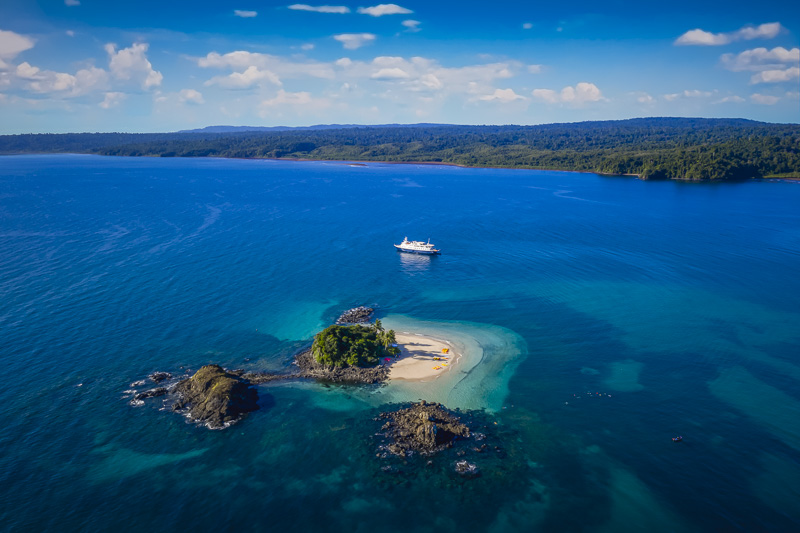
We had the un-inhabited island to ourselves for the day as we snorkeled around in its pristine waters spying on sea turtles and reef sharks. If there is one place to be marooned on an island, this is it.
Dempster Highway – Canada
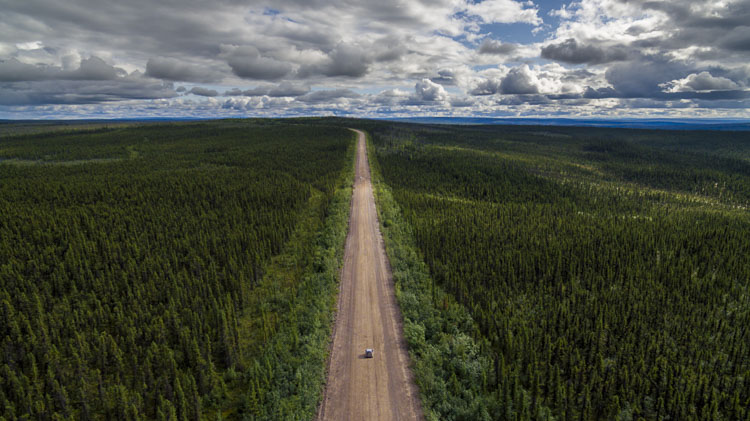
We love a road trip. We’ve taken a road trip on every continent (except Antarctica). When we had a chance to drive the legendary Dempster Highway in the Yukon, it was a dream come true.
Leaving from the remote northern town of Inuvik, we spent 2 days on this isolated stretch of highway where we saw nothing but moose, mountains and endless skies.
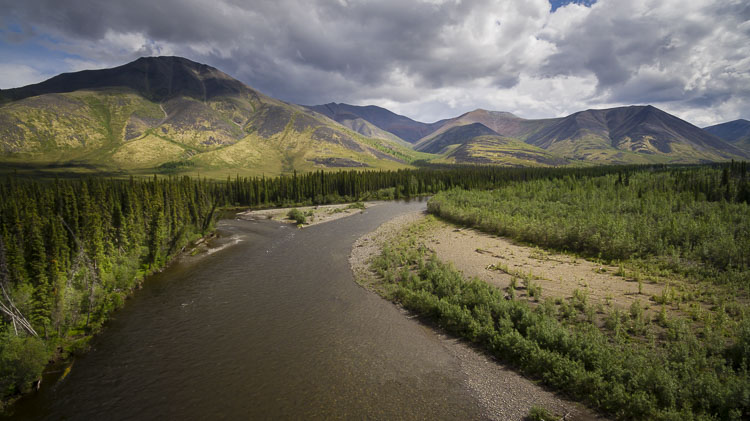
This road is so remote, it is also used as an airstrip. That’s right, you share the road with airplanes.
- Read more from the Yukon
American Samoa
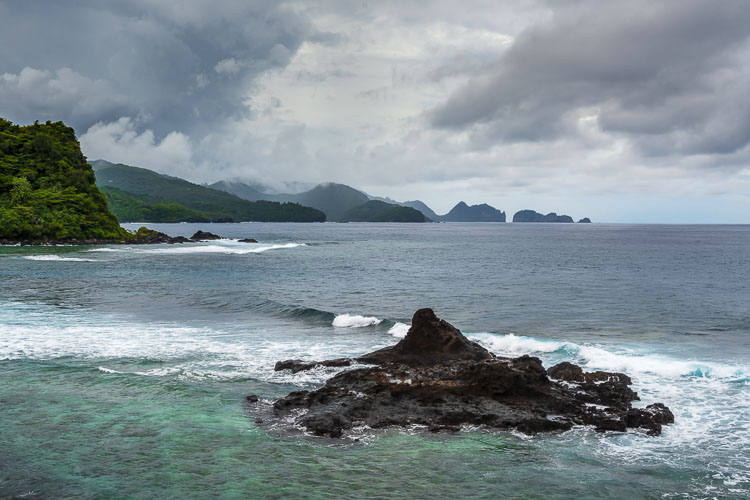
One of the advantages of taking a South Pacific Cruise is having the opportunity to go to places that are too remote and isolated to visit on your own.
It was never our dream to visit American Samoa, but it was pretty cool to be able to say that “we’ve been there.”
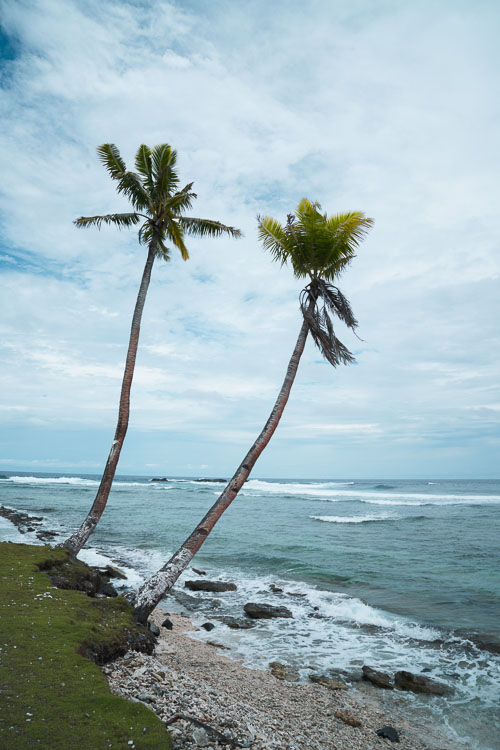
This tiny American Territory is far far away from the United States and a lovely spot to visit. We hired a car to take us around the island exploring and strolling along deserted beaches on the main island of Pago Pago.
Fiji
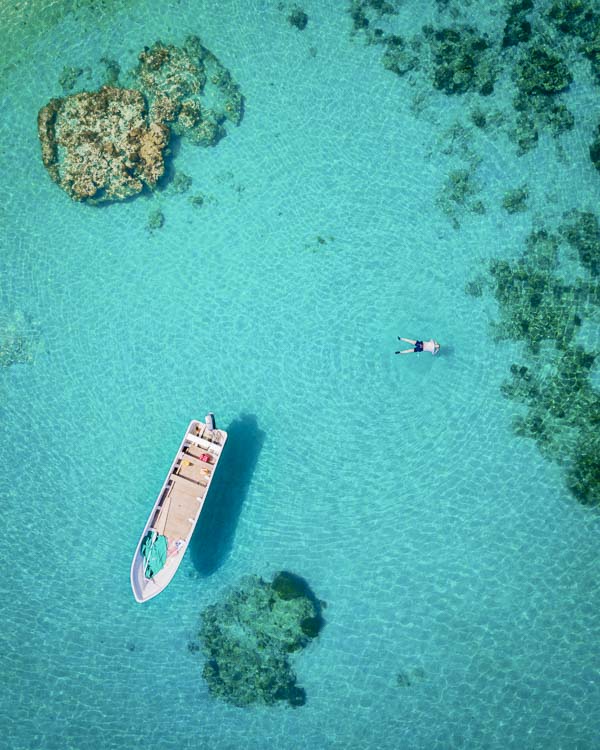
Located i n the South Pacific Ocean, Fiji itself is a well-traveled South Pacific destination with a thriving community of local tribes and a strong tourism infrastructure.
Home of the Headhunter, ancient caves, and traditional Kava ceremonies, Fiji is exotic. But it is when you go out to explore one of the 330 surrounding islands that you truly feel that you in a remote and isolated land.
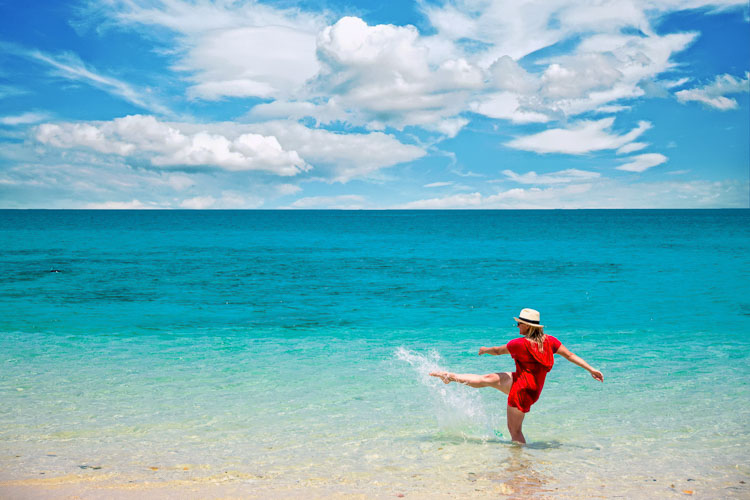
Crystal clear waters surround islands and atolls and by hiring a boat or even staying on a private island, you’ll have a quiet vacation walking along the endless secluded beaches de-void of any people at all.
- Read more about Fiji:
Inuvik – Canada
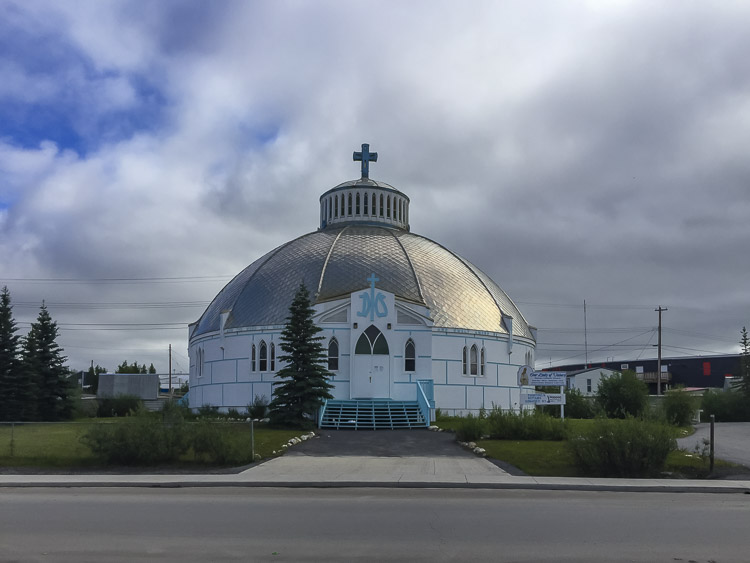
Inuvik in the Northwest Territories was once a thriving oil and gas settlement. The industry collapsed in the 1990s and today it continues to be home to the Inuvialuit and Gwich’in Peoples.
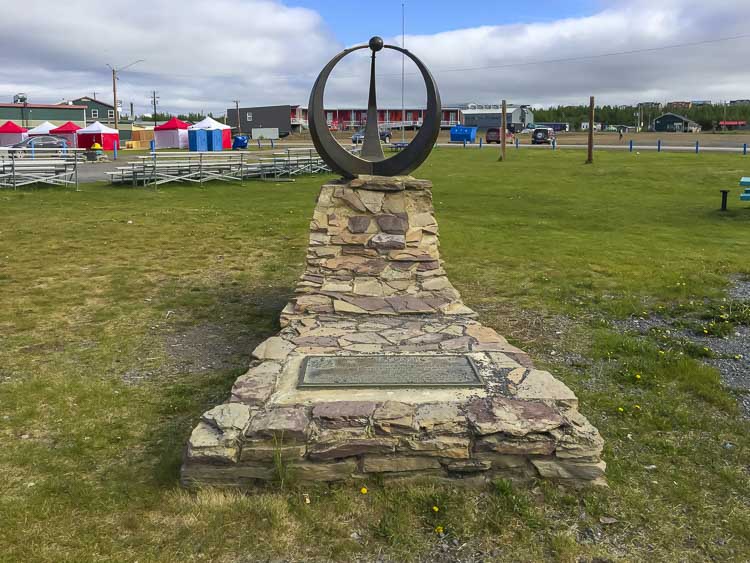
Inuvik is located 200 km above the Arctic Circle and is just 100km from the Arctic Ocean making it a truly isolated destination in Canada.
Wilpena Pound – Australia
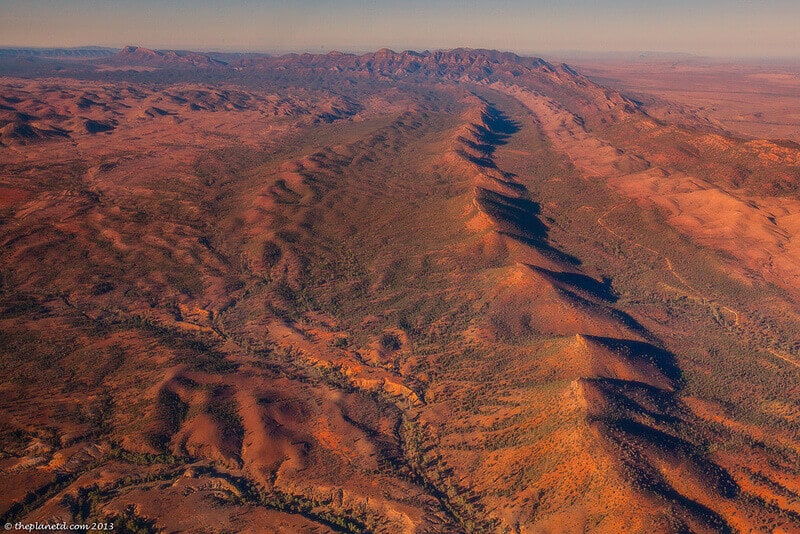
It was a toss-up for us when choosing an isolated place in Australia. There are certainly more remote locations in this country such as places in Western Australia and the Northern Territories, but we haven’t personally been there.
Choosing between Kangaroo Island, Fraser Island and Wilpena Pound was tough, but Wilpena Pound won out. (these are the three remote destinations on the continent that we’ve been to)
Wilpena Pound is an incredible 17km long rock formation is nestled within the Flinders Ranges of South Australia. It reminds one of the Grand Canyon, only without all the tourists.
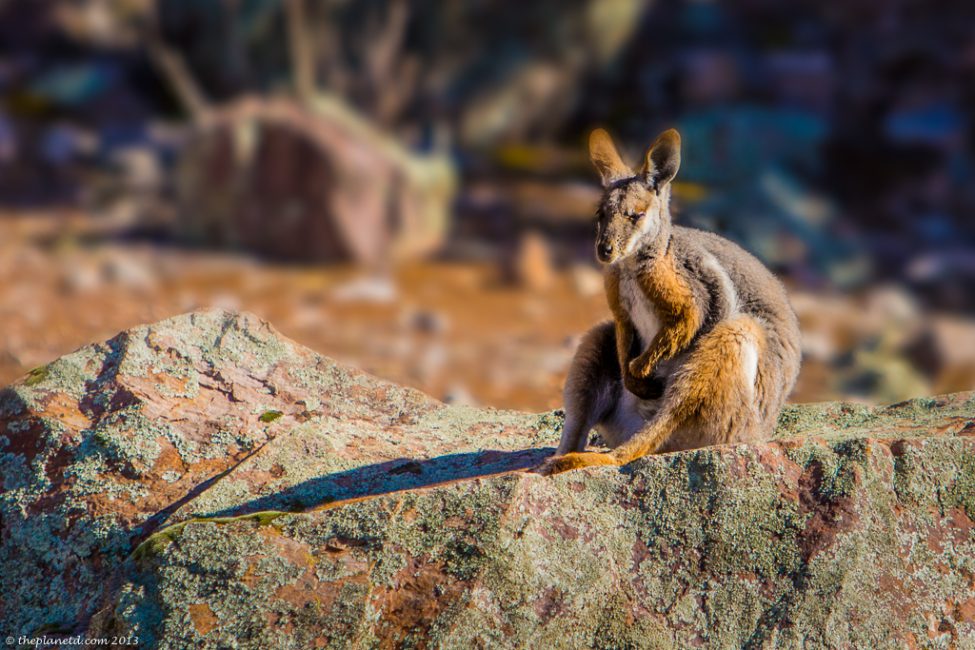
We took a road to nowhere, five hours north from Adelaide to the heart of the Australian outback and were mesmerized by this incredible landscape filled with wildlife. A scenic flight over Wilpena Pound Truly showcased its majesty.
Read More about Australia:
Galapagos Islands
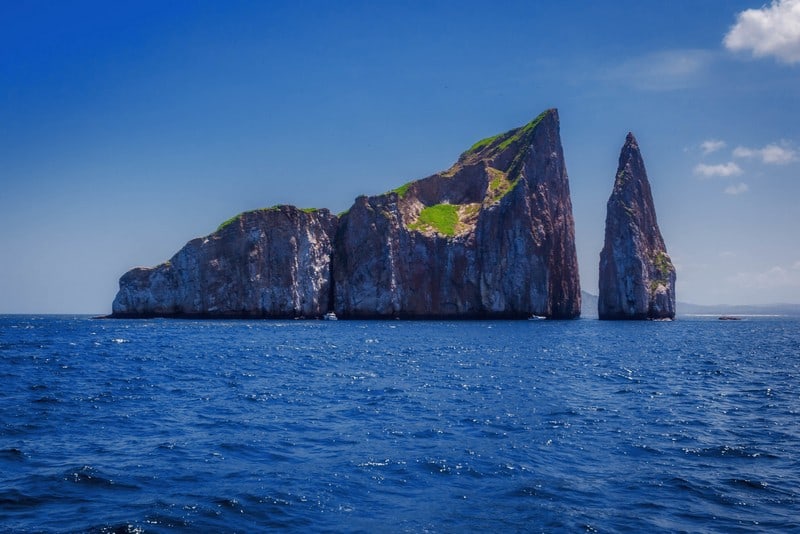
Located off the coast of Ecuador, the Galapagos used to be as remote and isolated as it gets. It was so isolated, that Isabela Island was used as a Spanish penal colony in the 1950s.
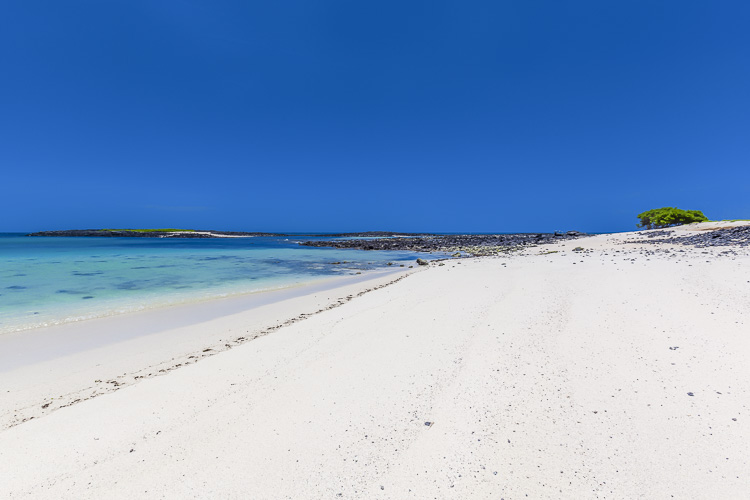
Today it attracts cruises and tours to see its unique wildlife and landscapes. Even though it is a popular destination, we barely saw another tour group during our time exploring the Galapagos Islands.
Right Now, Hurtigruten Cruises is offering up to 50% off on select cruises worldwide. Find the Expedition Cruise that suits your needs and save now!
We had beaches to ourselves and interacted with sea lions, Galapagos sharks and turtles with nobody else around. In the Galapagos, you can still have an isolated vacation.
- Read more about the Galapagos:
Peruvian Amazon
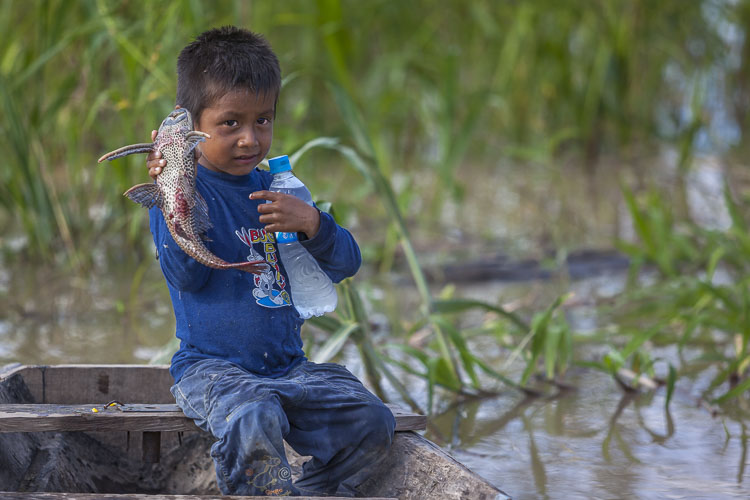
We had never felt so isolated in the Amazon as when Dave broke his back four days into our Amazon Cruise.
It was then that we realized, “you can’t simply call 911 and have an ambulance rush you to the hospital”. It’s hard enough for permanent residents to get their hands on running water.
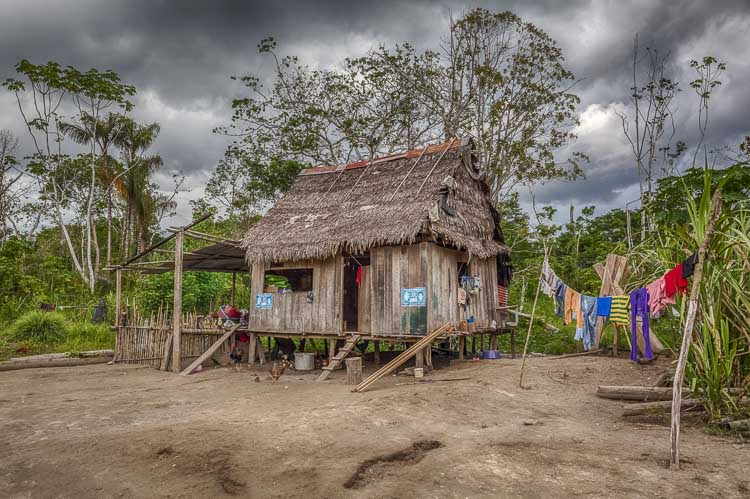
We waited four hours for a floatplane to come to the rescue and it was another 10 hours before we reached the isolated town of Iquitos. There are no roads to Iquitos. The only way in or out is by plane or ship.
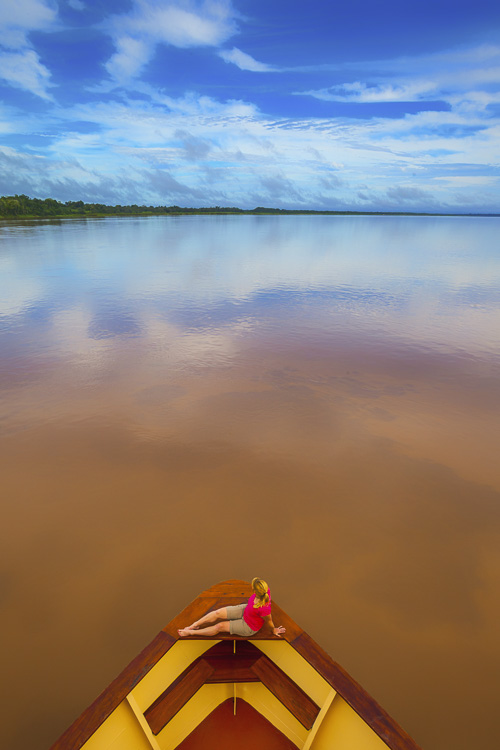
We waited in the small town for 9 days for an air ambulance to come to the rescue, but looking back, I am so glad that we had the five days on the Amazon to interact with isolated tribes, to see the cute and cuddly wildlife and to witness the power of the Amazon River.
- Read More:
The White Desert of Egypt
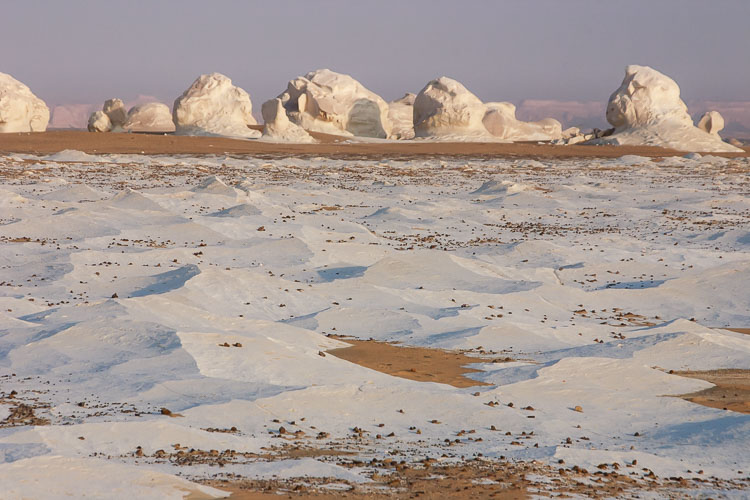
Driving out towards the Siwa Oasis from Cairo is the most impressive desert we have ever seen. The White Desert of Egypt was our first ever encounter with the Bedouin. We camped overnight in the middle of this Lunar landscape with clear starry skies overhead. It is only a six-hour drive from Cairo, but it feels worlds away.
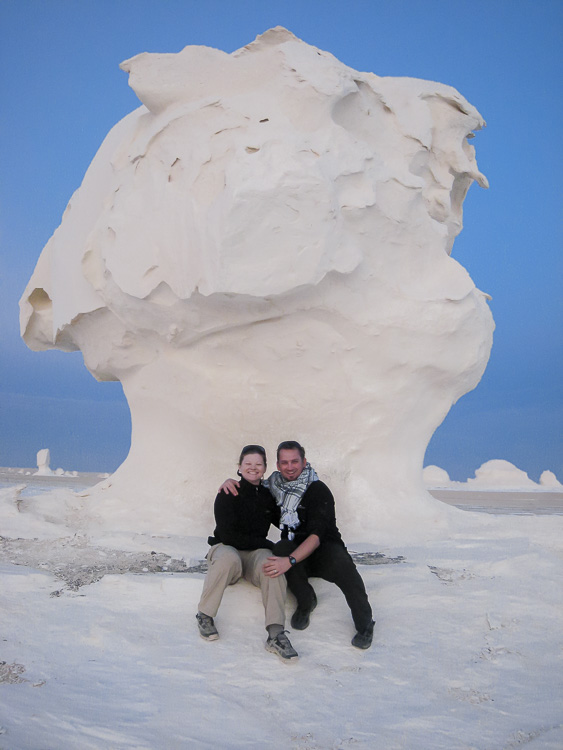
- Read more about Egypt:
More Isolated Places
Easter Island Chile
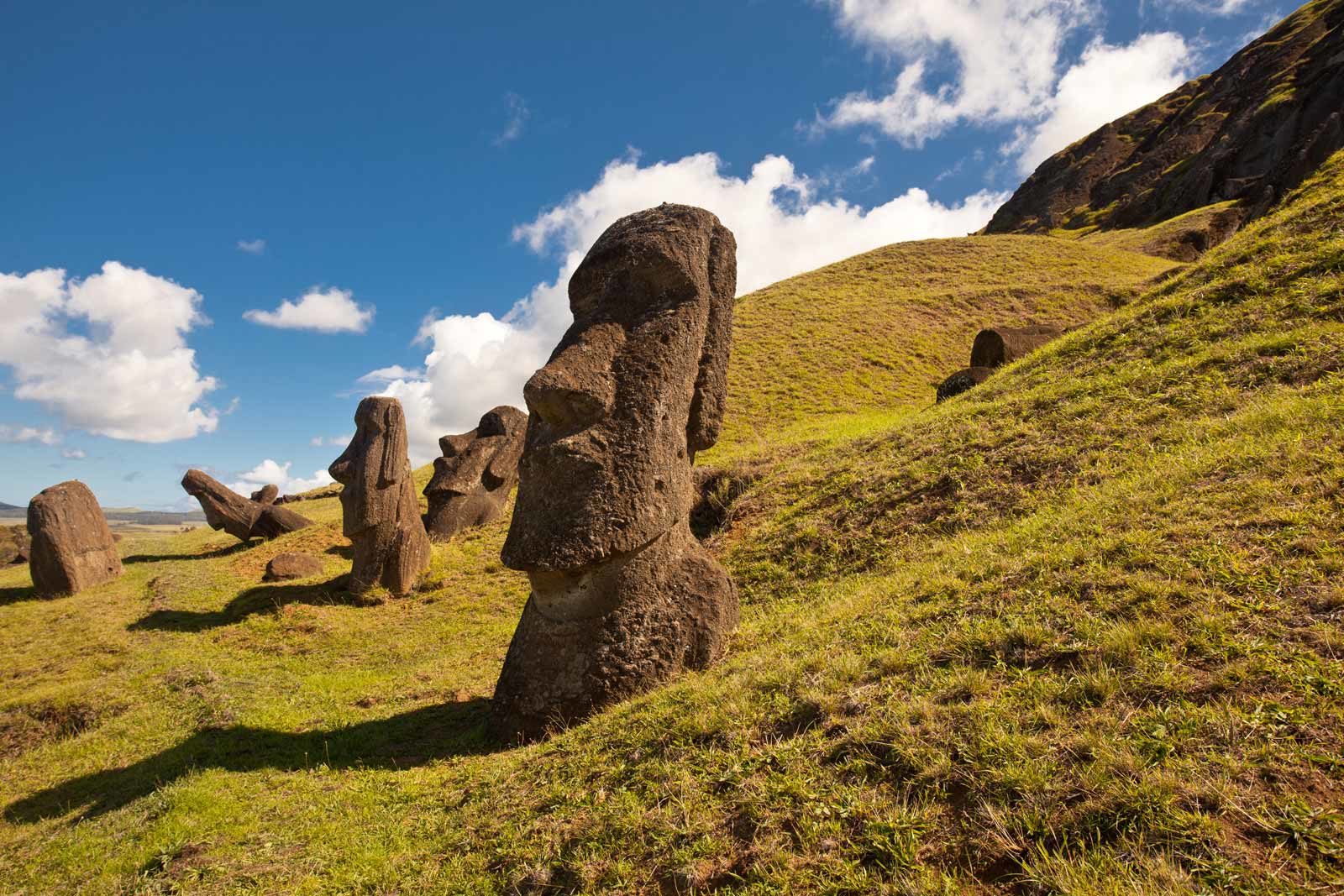
Easter Island, or Rapa Nui as it is known to the local people, stands as one of the most isolated inhabited islands in the world. It is located over 2,000 miles from the nearest continental point in Chile and 1,289 miles from the closest inhabited island, Pitcairn.
The island’s isolation is steeped in both geographical and historical intrigue. Created by volcanic activity, Easter Island emerged as a solitary peak in the vast expanse of the Pacific Ocean. This seclusion has preserved a unique and rich cultural heritage, visible through the island’s iconic moai statues—monolithic human figures carved by the Rapa Nui people centuries ago.
The Kerguelen Islands, The “Desolation Islands”
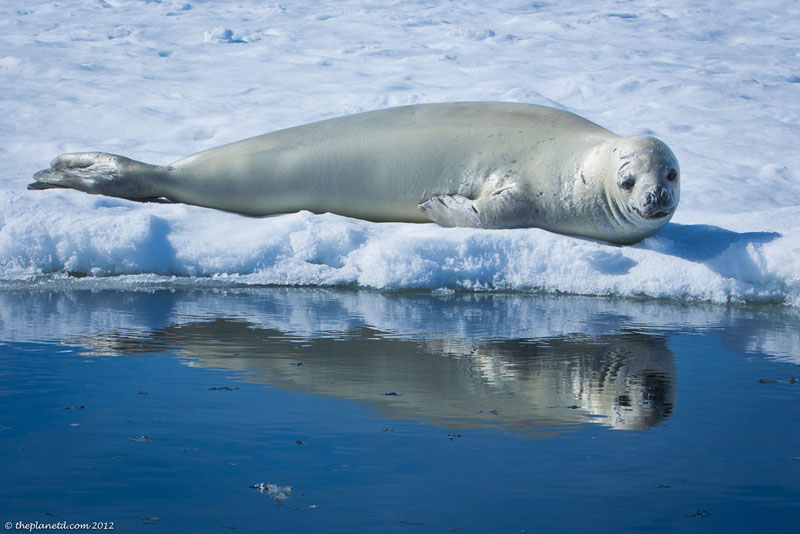
The Kerguelen Islands, often called the “Desolation Islands” due to their stark and remote beauty, are a collection of islands in the southern Indian Ocean that epitomize the very essence of isolation. These islands, part of the French Southern and Antarctic Lands, are situated more than 3,300 kilometers away from the nearest populated location, Madagascar, and are accessible only by ship, a journey that takes days from the island of Réunion, the usual launch point for trips to this distant archipelago.
The beauty of the Kerguelen Islands is as raw and untouched as it is severe; their jagged mountain peaks, sweeping glacial valleys, and a vast network of fjords create a rugged landscape that is both formidable and captivating.
Pitcairn Island
Pitcairn Island, a tiny speck in the vast Pacific Ocean, is the epitome of isolation, encapsulated by the immensity of sea that separates it from the rest of civilization. As the only inhabited island of the Pitcairn Island group, it is a British Overseas Territory comprising four volcanic islands, but it is the remoteness of its location that is most striking—it lies approximately halfway between New Zealand and Peru, with the closest inhabited land being Tahiti to the northwest, over 1,300 miles away.
The island is most famously known as the refuge of the mutineers from the HMS Bounty, and today, their descendants make up the majority of the island’s small population. With no airstrip, the only access to the outside world is by a long sea voyage, making it one of the least accessible and least populated jurisdictions on the planet.
Changtang, Tibet
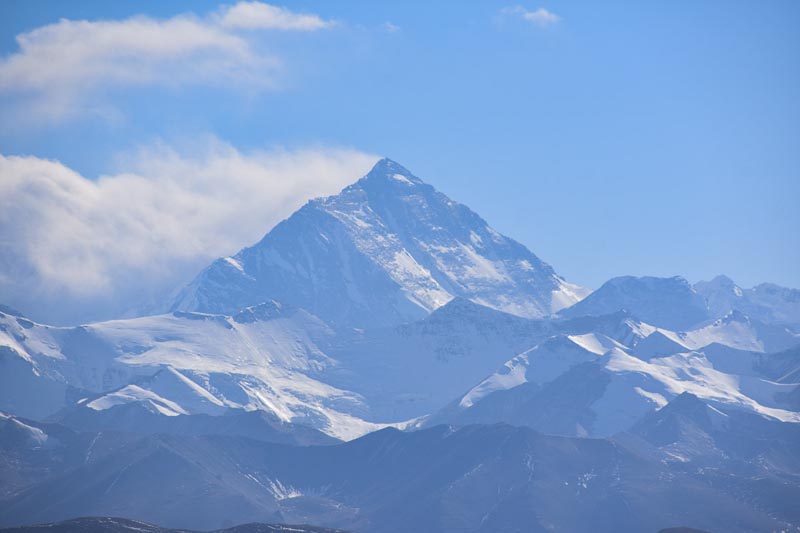
Changtang is located on a high Tibetan Plateau that stretches across the northern part of the Tibetan Autonomous Region and into neighboring countries, an immense region often referred to as the “Roof of the World.” This vast and elevated stretch of land, averaging over 4,500 meters above sea level, is ringed by towering mountain ranges that shield it from the bustling world beyond. The region is home to the Changpa, a nomadic people whose lifestyle has remained largely unchanged for centuries, adapted to the harsh and unpredictable climate of their homeland.
The vivid blues and greens of the high-altitude lakes contrast sharply with the golden and brown hues of the vast grasslands making Changtang not just one of the most isolated, but also one of the most beautifully majestic places on Earth.
Tristan Da Cunha, South Atlantic Ocean
Tristan da Cunha, located in the South Atlantic Ocean, is the epitome of isolation and unspoiled beauty. This volcanic archipelago is the most remote inhabited archipelago in the world, situated over 2,400 kilometers from Saint Helena, its nearest inhabited neighbor, and 2,800 kilometers from the nearest continental land, South Africa. The main island of the group, also named Tristan da Cunha, is home to a small, resilient community that lives in Edinburgh of the Seven Seas, often touted as the most remote permanent settlement on Earth.
Visiting Tristan da Cunha is not for the faint-hearted, as it requires a long voyage by sea and the acceptance of the island’s rhythm, untethered from the urgency of modern life. Those who make the journey find themselves in a place where community values intertwine with the raw elements of nature, where the vastness of the ocean and the strength of the volcanic land create a sanctuary of unparalleled tranquility.
Ittoqqortoormiit Greenland
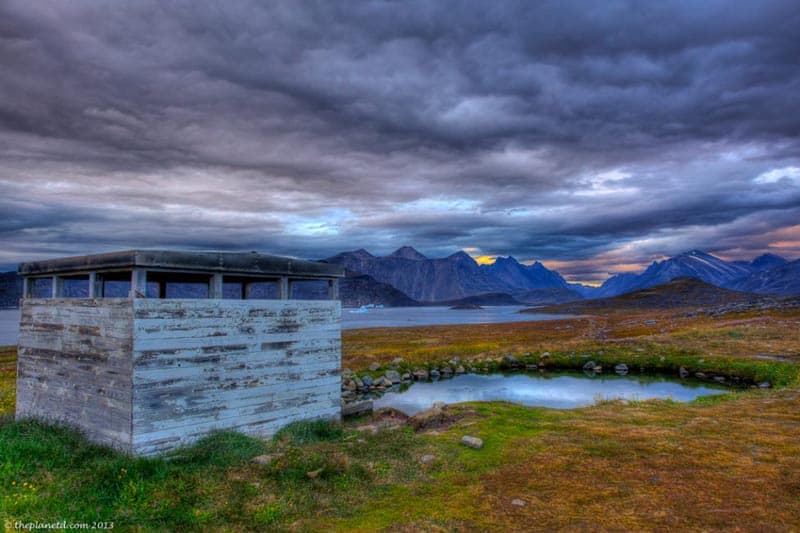
Ittoqqortoormiit, located on the eastern coast of Greenland, is one of the most remote settlements in the Western Hemisphere. With no roads leading to it, access is limited to boats during the short summer season and helicopters or dog sleds during the long winter months. The town is surrounded by the vast and icy Greenland Sea, and the closest neighboring town is hundreds of miles away. The region’s harsh climate and ice-bound landscape add to its isolation, while its proximity to the Northeast Greenland National Park offers stunning Arctic scenery, making it a secluded haven for those who manage to visit.
Supai Arizona
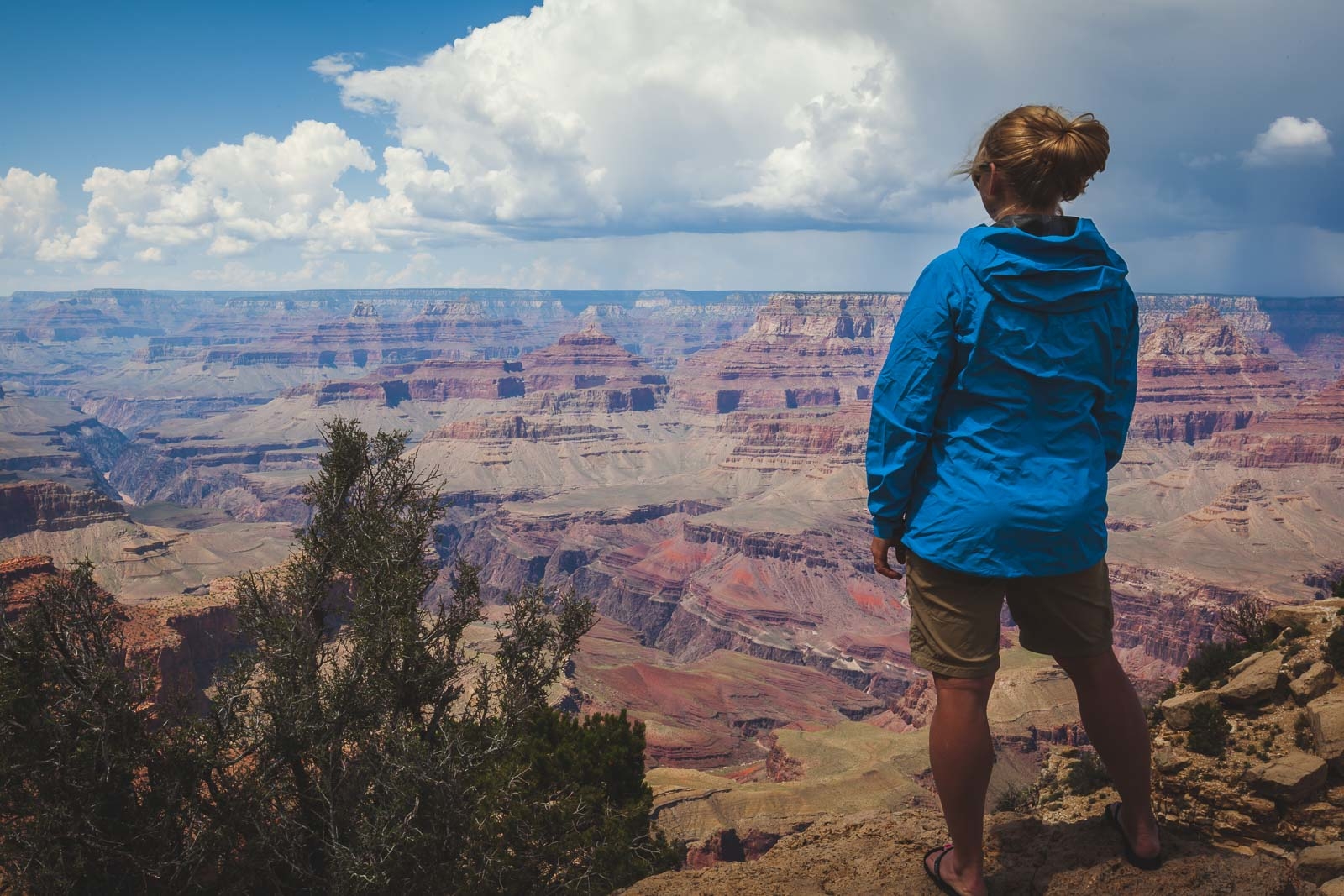
Supai, Arizona, is situated at the bottom of the Grand Canyon within the Havasupai Indian Reservation. It is the only place in the United States where mail is still delivered by mule train due to the lack of road access. The village can only be reached by a helicopter, an 8-mile hike, or a mule ride from the canyon rim.
Supai’s isolation is a result of the steep canyon walls that encase it, providing a scenic yet secluded environment. The Havasupai people have lived in this remote location for centuries, with their culture deeply intertwined with the natural beauty of the waterfalls and the red canyon walls that define their home.
Longyearbyen, Norway
Longyearbyen, cradled in the remote reaches of the Svalbard archipelago, is not just the world’s northernmost settlement of significant size, but also one of its most captivatingly isolated locales. Encircled by the dramatic landscapes of the high Arctic, Longyearbyen is a beacon of human resilience amidst the wilderness of the polar north. With the North Pole mere hundreds of miles away, it is more accessible to polar bears than to the bustling civilizations of the world’s temperate zones.
The beauty of Longyearbyen is stark, profound, and otherworldly. The midnight sun bathes the land in an ethereal glow for months, while the polar night cloaks it in a mysterious darkness, illuminated by the mesmerizing dance of the aurora borealis. The surrounding glaciers, fjords, and snow-capped mountains present a visual spectacle that few places on Earth can rival. The isolation is not only geographical but also experiential; life here moves to the rhythm of the extreme climate and the seasonal shifts that dictate the terms of existence.
Oymyakon, Russia
Oymyakon, Russia, is often regarded as one of the most isolated places on Earth, not just for its geographic location but also for the extreme conditions that define it. Nestled in the heart of Siberia, Oymyakon is colloquially known as the ‘Pole of Cold,’ holding the record for coldest inhabited places on earth in any inhabited location on the planet.
This small village is encircled by the vast, frozen expanse of the Siberian tundra, miles away from the bustling cities of Russia’s western regions. The harsh climate ensures that travel to and from Oymyakon is as formidable as the enduring winter itself, with the closest significant city, Yakutsk, located approximately 540 miles away through desolate, often ice-bound landscapes.
And these are the most isolated places on earth that we’ve been to. Where have you been that is completely isolated and away from everything?
You May Also Enjoy
- 50 Most Beautiful Places in the World to Visit – That We’ve Been
- The Best and Biggest Festivals Around The World
- 8 Most Remarkable Adventures Around the World
- 27 Amazing Adventures Around the World – That We’ve Done
- 21 of The Best Treks in the World
- 31 Most Beautiful Cities in Europe to See in 2020
- 27 Greatest Places to Visit in Africa
- 41 Beautiful Places in Canada To Visit Right Now

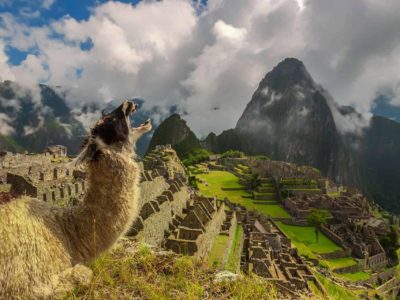
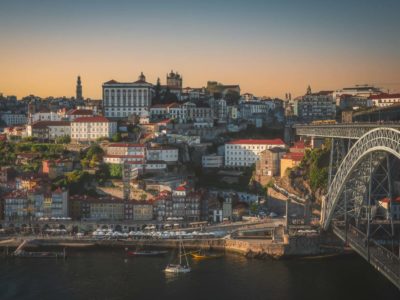
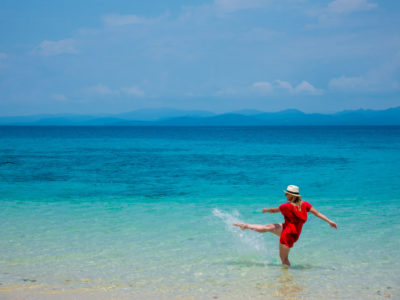
Thanks for this guys!
OMG! These places are so amazing.
OMG! These places are so amazing. I so wish to pay a visit to each of the places at least once in my lifespan. Galapagos Island and Fiji , these two places are in my wish-list for a few years now. I will start exploring once the situation improves.
Wow, such wonderful photos! Thank you Deb and Dave for sharing these. Was the title image taken in the Flinders Ranges as well? It looks familiar but I’m not sure 😉
Thanks for this guys! Some truly amazing places on this list!
We hope to make it to Greenland soon 🙂 if everything opens up soon enough.
The places which you have added here is most of them are very new for me. The ways which you have captured the images its look very nice with this natural picture. I hope will got to this place soon.
This blog was how do I say it? Relevant!! Finally I have found something which helped me. Thanks!
Amazing pictures! I got the impression that I visited all these places))) when I read your blog! Super virtual trip! Thanks!
These places are incredible and your pictures are stunning. Thank you for sharing these isolated places — I needed the virtual escape!